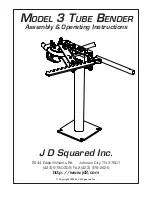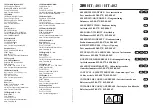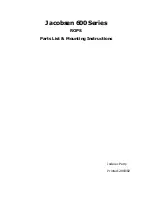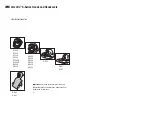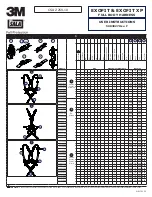
8
–5
Ø
DC
: All the signal's frequency components are coupled to
the trigger circuit. This is used in the case of high-frequency
bursts, or where the use of AC coupling would shift the
effective trigger level.
Ø
AC
: Here the signal is capacitively coupled. DC levels are
rejected and frequencies below 50 Hz attenuated.
Ø
LF REJ
: The signal is coupled via a capacitive high-pass
filter network. DC is rejected and signal frequencies below
50 kHz attenuated. This mode is used when stable triggering
on medium- to high-frequency signals is desired.
Ø
HF REJ
: Signals are DC-coupled to the trigger circuit and a
low-pass filter network attenuates frequencies above
50 kHz. The HF REJ trigger mode is used to trigger on low
frequencies.
Ø
HF
: Used for triggering on high-frequency repetitive signals
in excess of 300 MHz. Maximum trigger rates greater than
500 MHz are possible. HF triggering should be used only
when needed. It will be automatically overridden and set to
AC when incompatible with other trigger characteristics —
as is also the case for SMART Trigger. Only one slope is
available, indicated by the trigger symbol.
Slope
Slope
determines the direction of the trigger voltage transition
used for generating a particular trigger event. Like coupling, the
selected slope is associated with the chosen trigger source.
Hold-off
Hold-off disables the trigger circuit for a given period of time or
a number of events after a trigger event occurs. It is used to
obtain a stable trigger for repetitive, composite waveforms. For
example, if the number or duration of sub-signals is known they
can be disabled by choosing an appropriate hold-off value.
Without Hold-off, the time between each successive trigger
event would be limited only by the input signal, the coupling, and
the oscilloscope's bandwidth. Sometimes a stable display of
complex repetitive waveforms can be achieved by placing a
condition on this time. This hold-off is expressed either as a time
or an event count,
described on the following pag
es.
Summary of Contents for 9300C Series
Page 1: ...Operator s Manual LeCroy 9300C Series Digital Oscilloscopes Revision A January 1998 ...
Page 8: ...1 3 billed for parts and labor related to the repair work and for shipping ...
Page 18: ...4 1 4 Introduction to the Controls Two Channel Front Panel ...
Page 19: ...4 2 Introduction to the Controls Four Channel Front Panel ...
Page 92: ......
Page 111: ...11 3 Dual Quad ...
Page 112: ...11 4 Display Parameter s XY only ...
Page 113: ...11 5 XY Single XY Dual ...
Page 138: ...12 21 Ø FLASH UPDATE Offering the Update from and Update Program menus illustrated next page ...
Page 139: ...12 22 UTILITIES The full screen warning message shown when FLASH UPDATE has been selected ...
Page 142: ...13 2 WAVEFORM STORE RECALL ...
Page 182: ......
Page 189: ...A 15 9344C Series 9350C Series 9354C Series 9354CTM 50 000x 9344CL 9350CL 9354CL 100 000x ...
Page 252: ...E 6 Appendix E ...
Page 275: ...Index 9370C 9374C Series A 18 9384C Series A 24 Zoom menu 10 7 Zoom of Math Functions 10 1 ...
































